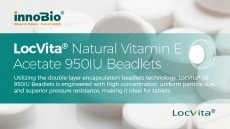NutriScience launches glycerophosphates for sports drinks
mineral fortification based on client requests.
Glycerophosphates are thought to have enhanced bioavailability compared with other mineral forms.
Connecticut-based NutriScience's series will include calcium, ferric, magnesium, manganese, potassium and sodium glycerophosphates.
The company said glycerophosphates have overwhelmingly been used in toothpaste, but that they are receiving requests for use in dietary supplements and sports beverages.
"They are used in performance tonics because they boost mineral absorption in the body faster than most other mineral sources," NutriScience president Jacob Pallathra told NutraIngredients-USA.
Sports beverages are increasingly popular with consumers, which is driving innovation in the category.
According to Datamonitor, between 2000 and 2005, consumer spending on sport food and beverages in the United States grew by 6.7 percent to $3.1bn.
Total consumer spending on sports nutrition products (including dietary supplements) reached $5.4bn in 2005.
The US accounted for the most of this spending, at $3.7bn, while Europe accounted for $1.7bn over the period.
NutriScience's synthetically-derived line is 100 percent water soluble and therefore lends well to beverage applications.
"Glycerophosphates are gradually getting more mainstream," said Pallathra.
"In fact, in Europe they are used in pharmaceuticals as a mineral source and for bioavailability."
The company, whose flagship product is the Suntheanine brand of the L-theanine amino acid ingredient.
While Pallathra said glycerophosphates have functional food applications, he said they have so far not made an appearance in this category.
NutriScience plans to spread the word about its glycerophosphate line via trade shows to begin with.
The company said it performed in vitro experiments to demonstrate the bioavailability of various calcium compounds in the presence of phosphate using calcium glycerophosphate, dicalcium phosphate, calcium lactate and calcium gluconate.
It was found that dicalcium phosphate, calcium lactate and calcium gluconate all precipitated at pH three to five.
Only calcium glycerophosphate was soluble at all pH levels two through nine.













